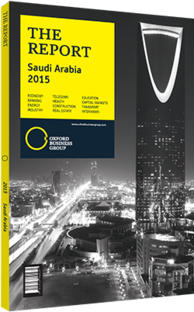Rising demand being met through large-scale developments in Jeddah
With Jeddah’s population continuing to grow at pace, the Jeddah Development and Urban Regeneration Company (JDURC) estimates that demand for housing in the city will rise to 40,000 units by 2023, up from a current figure of 18,000-25,000 units per year.
Meeting this demand would present a challenge in any city, yet in Jeddah the municipal authorities have the additional problem of redeveloping significant tracts of existing urban development. An estimated 20% of the population currently lives in unplanned developments spread across approximately 50 different sites. Ensuring these developments meet proper planning standards has been a priority for the city since the devastating floods of 2009 and 2010, in which illegal and unplanned construction was identified as among the factors that exacerbated the damage.
The municipality’s housing master plan is thus based upon a two-pronged strategy: the regeneration and redevelopment of existing slums; and the creation of new pioneer projects, with the aim of drawing growth out of the historical centre and into greenfield sites where it can be properly managed.
REGENERATION & CREATION: Key projects in the first strand include the redevelopment of Ruwais and Khozam Palace districts, which respectively cover 1.2m and 4.1m sq metres. Also within the centre of Jeddah is the JDURC’s Heart of Jeddah project, which entails the redevelopment of an 850,000-sq-metre brownfield site at the former airport. This has recently entered the execution stage. As part of these regeneration projects, the municipality has identified 20,000 existing housing units in need of demolition or renovation.
In the second strand, three new cities to the north and east of Jeddah are currently in the construction or planning stages, two of which will include significant residential components. To the north, Salman Bay is a 3m-sq-metre mixed-use mixed-income town centre with a residential element of 25,000 units, planned to anchor the northern town sector named “Obhur” in Jeddah’s new structural plan. The first phase, comprising 46 buildings, is currently under way. Meanwhile, to the east the Wadi Al Aslaa area has been targeted for perhaps the biggest residential development currently planned in the Jeddah region. Murooj Jeddah – a public-private partnership between the JDURC and Sumou Holding – will see 132m sq metres of mixed-use development, which is expected to eventually house 170,000 residents. Planned facilities include 16m sq metres of recreational developments and regional scale health care, educational and research facilities. Construction commenced in 2014 and is expected to last until 2021.
POSITIVE ATTRACTION: According to Nidhal Abdulrahman Taibah, vice-president for development at the JDURC, the key to success for these new developments will lie in providing a “magnet” to draw other developers. “When a master plan calls for growth in one direction, we try to facilitate that by creating a magnet there to draw other developments,” he told OBG. “Murooj is playing the role of a magnet in the east.” By demonstrating it has the capacity to provide critical facilities and utilities in these new developments, the municipality hopes to attract more developers to these sites.
MEETING DEMAND: Despite these extensive projects, housing demand is unlikely to be fully satisfied, leaving room for further investment. According to real estate consultancy and property management firm JLL, the housing pipeline for the next three years is 77,000 units, still short of demand estimates.
It is also unclear as of yet what effect recent changes in real estate finance will have on the market. Buyers are now required to provide a 30% down payment, and according to Mohammed Habis, director of strategy and business development at property firm Ewaan, the market has seen an increasing number of transactions in smaller unit sizes as a result. Owing to capital needs and project lifecycles, smaller developers in particular (who account for perhaps 90% of current demand) may struggle to deal with these changes. For Habis, community developments are thus more likely to prove the future of the market (see Real Estate chapter).
You have reached the limit of premium articles you can view for free.
Choose from the options below to purchase print or digital editions of our Reports. You can also purchase a website subscription giving you unlimited access to all of our Reports online for 12 months.
If you have already purchased this Report or have a website subscription, please login to continue.

